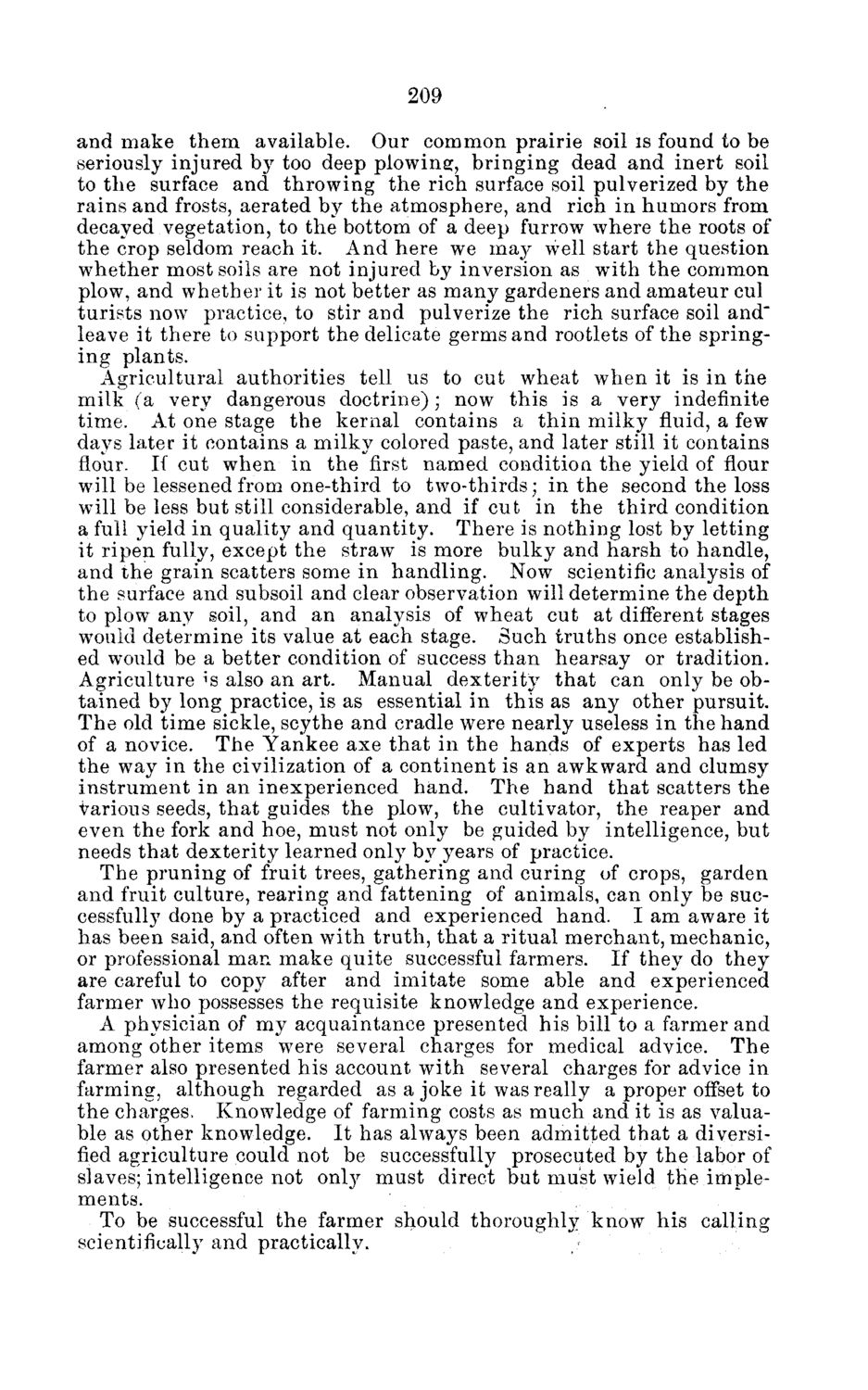| |
| |
Caption: Board of Trustees Minutes - 1876
This is a reduced-resolution page image for fast online browsing.

EXTRACTED TEXT FROM PAGE:
209 and make them available. Our common prairie soil is found to be seriously injured by too deep plowing:, bringing dead and inert soil to the surface and throwing the rich surface soil pulverized by the rains and frosts, aerated by the atmosphere, and rich in humors from decayed vegetation, to the bottom of a deep furrow where the roots of the crop seldom reach it. And here we may well start the question whether most soils are not injured by inversion as with the common plow, and whether it is not better as many gardeners and amateur cul turists now practice, to stir and pulverize the rich surface soil and" leave it there to support the delicate germs and rootlets of the springing plants. Agricultural authorities tell us to cut wheat when it is in the milk (a very dangerous doctrine); now this is a very indefinite time. At one stage the kernal contains a thin milky fluid, a few days later it contains a milky colored paste, and later still it contains flour. If cut when in the first named condition the yield of flour will be lessened from one-third to two-thirds; in the second the loss will be less but still considerable, and if cut in the third condition a full yield in quality and quantity. There is nothing lost by letting it ripen fully, except the straw is more bulky and harsh to handle, and the grain scatters some in handling. Now scientific analysis of the surface and subsoil and clear observation will determine the depth to plow any soil, and an analysis of wheat cut at different stages would determine its value at each stage. Such truths once established would be a better condition of success than hearsay or tradition. Agriculture l#s also an art. Manual dexterity that can only be obtained by long practice, is as essential in this as any other pursuit. The old time sickle, scythe and cradle were nearly useless in the hand of a novice. The Yankee axe that in the hands of experts has led the way in the civilization of a continent is an awkward and clumsy instrument in an inexperienced hand. The hand that scatters the various seeds, that guides the plow, the cultivator, the reaper and even the fork and hoe, must not only be guided by intelligence, but needs that dexterity learned only by years of practice. The pruning of fruit trees, gathering and curing of crops, garden and fruit culture, rearing and fattening of animals, can only be successfully done by a practiced and experienced hand. I am aware it has been said, and often with truth, that a ritual merchant, mechanic, or professional man make quite successful farmers. If they do they are careful to copy after and imitate some able and experienced farmer who possesses the requisite knowledge and experience. A physician of my acquaintance presented his bill to a farmer and among other items were several charges for medical advice. The farmer also presented his account with several charges for advice in farming, although regarded as a joke it was really a proper offset to the charges, Knowledge of farming costs as much and it is as valuable as other knowledge. It has always been admitted that a diversified agriculture could not be successfully prosecuted by the labor of slaves; intelligence not only must direct but must wield the implements. To be successful the farmer should thoroughly know his calling scientifically and practically.
| |